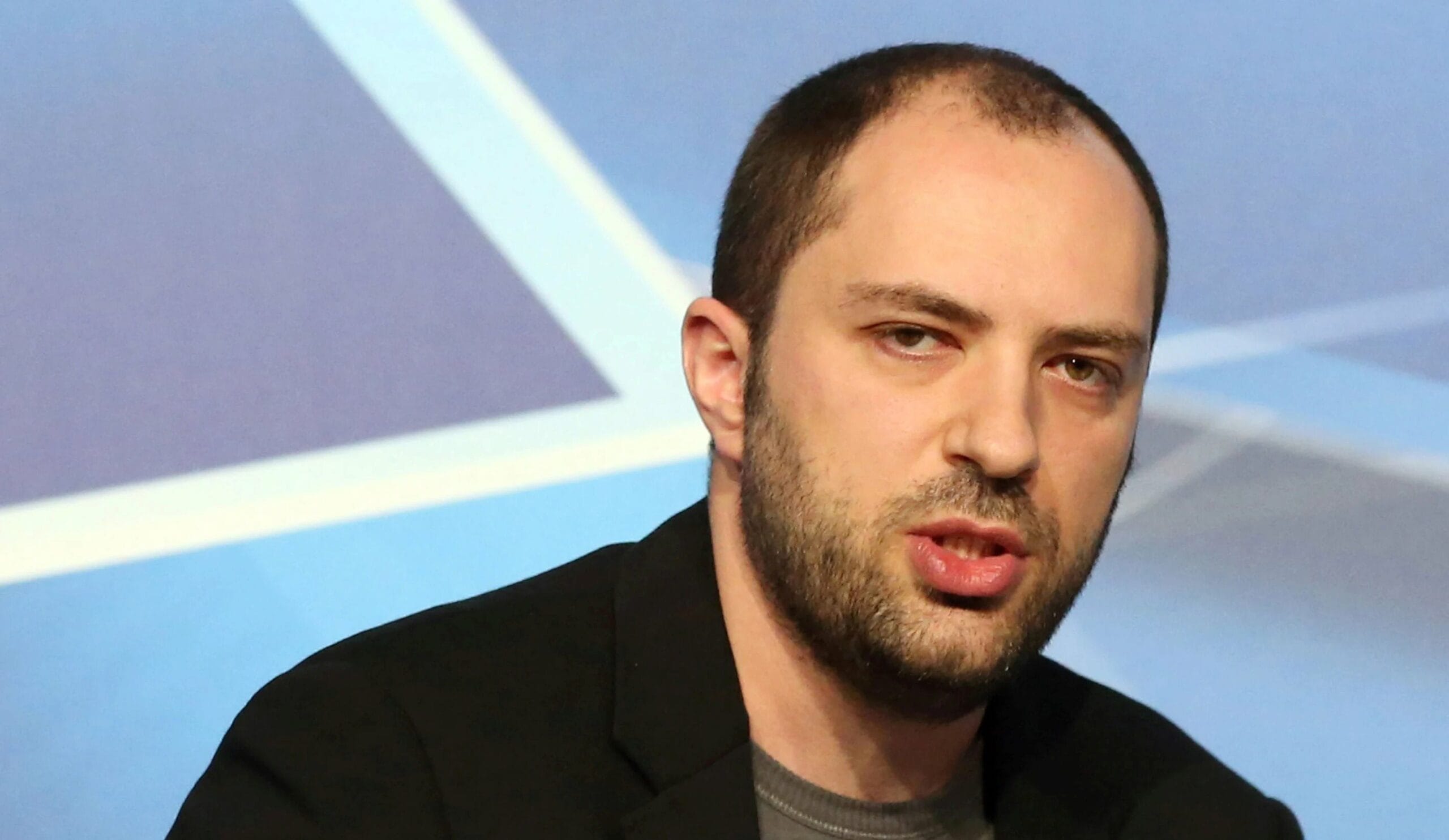You probably know Jan Koum as the man who sold WhatsApp to Facebook for a cool $19 billion. But there’s more to his story than meets the eye. This article delves into the fascinating facts about Jan Koum, the visionary behind one of the world’s most popular messaging apps. From his humble beginnings as a Ukrainian immigrant to his meteoric rise in Silicon Valley, Koum’s journey is an inspiring tale of resilience, innovation, and unwavering determination.
Astounding Facts About Jan Koum
Jan Koum’s life reads like a Hollywood script – from facing hardships in Ukraine to becoming a self-made billionaire in Silicon Valley. It’s a powerful testament to his remarkable resilience and drive. However, behind the headlines lies a man of intriguing complexities and passions that extend far beyond the realm of tech.
One of Koum’s defining characteristics is his steadfast dedication to user privacy and security. Passionate about protecting personal data, he made sure WhatsApp utilizes end-to-end encryption, meaning every message, photo, and call remains private, as secure as a sealed letter.
You might picture a billionaire tech mogul living a life of extravagance, but Koum defies expectations. He remains remarkably grounded, choosing philanthropy over flash. A significant portion of his wealth is directed towards organizations that are making a real difference in education and healthcare, particularly for underprivileged communities.
Beyond his technical prowess, Koum possesses an impressive linguistic talent. Fluent in English, Ukrainian, Russian, and Spanish, his ability to connect with people from diverse backgrounds played a crucial role in WhatsApp’s global success. After all, communication transcends mere words.
When he’s not revolutionizing digital communication, Koum indulges in his passion for vintage Porsches, admiring their timeless design and the seamless blend of beauty and engineering excellence. This appreciation for clean, elegant design is mirrored in WhatsApp’s user interface – intuitive, straightforward, and incredibly user-friendly.
Koum’s commitment to social justice runs deep. As a vocal advocate for immigrant rights, he openly discusses the challenges he encountered upon arriving in the United States, using his own experiences to guide others navigating the complexities of starting anew in a foreign land.
Jan Koum is more than just a tech genius; he’s a beacon of inspiration. His unwavering belief in his vision, resilience in the face of adversity, and dedication to making the world a better place make him a powerful role model for aspiring entrepreneurs and anyone daring to dream big. Koum’s story reminds us that with unwavering passion and determination, anything is possible.
How did WhatsApp get its name?
The catchy name “WhatsApp” isn’t arbitrary. It’s a clever fusion of the phrase “What’s up?” and “app,” encapsulating the app’s original purpose and the founders’ vision.
Jan Koum sought a name that felt instantly familiar and approachable, much like the app itself. He avoided technical jargon, opting instead for a name that embodied the simplicity and ease of use that WhatsApp embodied.
The name “WhatsApp” simply rolls off the tongue, making it easy to remember and pronounce. This simplicity likely played a significant role in WhatsApp’s global success, as a universally understood name transcends language barriers, connecting people from all walks of life.
How much is Jan Koum worth?
As of October 2023, Forbes estimates Jan Koum’s net worth to be a staggering $15.2 billion, placing him among the wealthiest individuals on the planet. This impressive sum largely stems from Facebook’s acquisition of WhatsApp in 2014 for $19.3 billion.
Despite his immense wealth, Koum remains remarkably down-to-earth. He’s known for his humility and commitment to philanthropy, regularly supporting causes close to his heart, particularly those focused on education and healthcare. Interestingly, he favors driving a classic 1980 Porsche 911, a testament to his grounded nature and appreciation for timeless design.
Koum’s story offers a fascinating glimpse into the life of a tech icon – a blend of immense wealth, humility, and a passion for making a difference.
How much did WhatsApp founders make?
The 2014 acquisition of WhatsApp by Facebook, now Meta, for a mind-blowing $19 billion catapulted its founders, Jan Koum and Brian Acton, into the realm of billionaires. While the exact breakdown remains undisclosed, estimations suggest Koum, as CEO, likely received around $6.8 billion, while Acton probably received around $3 billion.
Initially, WhatsApp operated on a subscription model, charging users a small fee to download and use the app. This seemingly insignificant fee, when multiplied by millions of users, quickly translated into substantial revenue. However, in 2016, WhatsApp shifted to a free service, generating revenue through strategic partnerships with businesses like banks, airlines, and online stores, who utilize the platform for customer communication. Some experts believe WhatsApp generated close to $8.7 billion in revenue in 2021 alone.
Several factors contributed to WhatsApp’s meteoric rise. Its intuitive design, seamless functionality across various devices, and commitment to privacy through end-to-end encryption have cemented its position as a global communication powerhouse.
The sale to Meta undoubtedly brought Koum and Acton immense wealth, but it was their dedication to creating a simple, secure, and user-friendly messaging platform that propelled WhatsApp to its current global standing as a communication phenomenon.
What are some interesting facts about Jan Koum?
Jan Koum’s path is nothing short of extraordinary. Here’s a closer look at what makes his story so captivating:
- Rags to Riches, Literally: Koum’s journey from a Ukrainian village with limited resources to a Silicon Valley titan is a true testament to his work ethic and desire to connect people globally.
- The Guardian of Privacy: Koum prioritizes user privacy. His dedication to secure communication is evident in WhatsApp’s robust end-to-end encryption, ensuring that only the sender and recipient can access messages.
- Sharing the Wealth, Making a Difference: Koum’s philanthropic endeavors focus on education and healthcare, demonstrating his commitment to social good and desire to create opportunities for others.
- Finding Peace in Nature and Simplicity: Despite operating in the fast-paced tech world, Koum finds solace in nature and appreciates minimalist design, as reflected in WhatsApp’s clean and user-friendly interface.
- A True Citizen of the World: Fluent in multiple languages, Koum possesses a global perspective that has undoubtedly contributed to WhatsApp’s widespread international appeal.
- A Need for Speed, but Classic: Koum’s passion for vintage Porsche cars reveals his admiration for timeless design and engineering excellence.
Jan Koum’s life is a tapestry of captivating contrasts. He embodies the belief that with unwavering determination, a commitment to one’s values, and a bit of luck, extraordinary things can be achieved.
Why did Jan Koum create WhatsApp?
Jan Koum’s inspiration for WhatsApp stemmed from a simple yet frustrating experience – missing a call while at the gym. This sparked an idea to create a platform where individuals could instantly share their availability, eliminating the guesswork often associated with traditional communication methods. What began as a simple status-updating app quickly transformed into a comprehensive messaging service. Koum and Acton recognized the growing need for a private and user-friendly messaging platform, and they designed WhatsApp with these core values in mind.
By 2014, WhatsApp had already garnered an impressive 400 million users, catching the attention of tech giant Facebook, who acquired the platform for a staggering $19 billion. This acquisition propelled Koum and Acton into the ranks of billionaires and solidified WhatsApp’s status as a dominant force in the tech world.
Key takeaways from WhatsApp’s success:
- Everyday problems can inspire groundbreaking solutions: Koum’s solution to a common annoyance revolutionized global communication.
- Simplicity is key: WhatsApp’s intuitive design played a crucial role in its widespread adoption.
- User-centric design wins: Prioritizing user needs and solving problems effectively are often precursors to success.
What was the main purpose of WhatsApp?
Before WhatsApp, staying connected with people, especially internationally, could be costly and inconvenient. WhatsApp emerged as a solution, providing an accessible and user-friendly platform for instant communication.
The founders envisioned a world where communication transcended geographical limitations. WhatsApp allows users to send text messages, make crystal-clear voice and video calls, and share multimedia content seamlessly, all for free with an internet connection.
Beyond cost-effectiveness, WhatsApp prioritizes user privacy, a stark contrast to traditional texting plans often laden with hidden fees and questionable data collection practices. The implementation of end-to-end encryption ensures that only the sender and receiver can access message content, providing a secure space for personal conversations.
The platform’s group chat feature revolutionized how we connect with multiple people simultaneously. WhatsApp facilitates group chats with up to 256 members, making it ideal for staying connected with family, friends, or colleagues, regardless of location.
What started as a messaging app evolved into a global phenomenon, connecting people, businesses, and communities in unprecedented ways. WhatsApp’s simplicity, reliability, and unwavering focus on user privacy have transformed the landscape of communication, making it an indispensable tool for billions worldwide.
Why is WhatsApp a name WhatsApp?
The name “WhatsApp” isn’t a product of complex algorithms or marketing jargon. It’s a playful nod to the casual greeting “What’s up?” emphasizing the app’s original intent as a platform for sharing one’s status and connecting with friends.
The name’s simplicity is arguably one of its greatest strengths. “WhatsApp” is easy to remember, pronounce, and translates seamlessly across languages, a crucial factor in its global appeal. It’s remarkable how a simple name can become synonymous with an entire communication medium.
Why is WhatsApp called that?
In 2009, when WhatsApp was in its infancy, in-app messaging was still in its nascent stages. The release of iOS 3.0, which introduced push notifications, was pivotal in WhatsApp’s development, enabling real-time message delivery.
The founders wanted a relatable and approachable name that resonated with their vision of simple and casual communication. “What’s up?” a ubiquitous greeting, fit perfectly. The name “WhatsApp” was born, combining the familiar greeting with the abbreviated term “app.”
This simple yet clever wordplay resonated with users. The name is easy to remember, rolls off the tongue, and perfectly encapsulates the app’s purpose. While other factors like user-friendliness, cross-platform compatibility, and end-to-end encryption contributed to its success, the name undoubtedly played a role in establishing its brand identity.
WhatsApp’s journey from a fledgling app to a global communication giant is an impressive tale of innovation, strategic branding, and a commitment to connecting people.
Where does WhatsApp get names from?
WhatsApp doesn’t possess mind-reading capabilities; it determines contact names by accessing your smartphone’s address book. When you message someone, the app cross-references the number with your saved contacts. If a match is found, the saved name is displayed.
If a contact is not saved or you receive a message from an unknown number, WhatsApp will simply display the phone number. Similarly, if a contact updates their name in their phone settings, it might take some time for WhatsApp to reflect the change, as the synchronization process isn’t instantaneous.
Here’s a simplified breakdown:
| Scenario | What WhatsApp Shows | Why? |
|---|---|---|
| Contact saved in your phone | Contact’s name | WhatsApp retrieves the name from your phone’s address book. |
| Contact not saved in your phone | Phone number | WhatsApp doesn’t have a name associated with the number. |
| Contact changes their name | May show old or new name, eventually updates | WhatsApp syncs with contact changes periodically. |
In essence, WhatsApp connects the dots between your contact list and the app’s messaging platform, making it easier to identify and connect with your contacts.
What is the origin of the word WhatsApp?
The word “WhatsApp” is more than just a catchy name; it’s a clever play on words that reflects the app’s core functionality. The name is a portmanteau, combining the common greeting “What’s up?” with the shortened term “app” for “application.”
This linguistic fusion perfectly encapsulates WhatsApp’s purpose – a platform for quick, casual communication, much like the informal exchange of “What’s up?” This approach resonated with users, as evidenced by the app’s massive global adoption.
While there’s no official confirmation beyond the obvious connection, the “What’s up?” origin story is widely accepted. The name’s simplicity, memorability, and reflection of the app’s core function have undoubtedly contributed to WhatsApp’s status as a global communication phenomenon.
Don’t miss these fascinating articles:
- Uncover the enigmatic history and thrilling facts about the infamous Abdullah the Butcher by delving into our dedicated page facts about abdullah the butcher.
- Similarly, embark on a journey to discover the intriguing story and fascinating details behind Roderick Strong’s remarkable career by exploring our article on facts about roderick strong.
- Unveiling the Enigma: Mansoureh Khojasteh Bagherzadeh’s Public Appearances & Private Life in Iran - July 18, 2025
- Unveiling the Mystery: Mansoureh Khojasteh Bagherzadeh’s Husband: A Rare Glimpse into a Private Life - July 18, 2025
- Unveiling Masoud Khamenei’s Mother: Power, Influence, and Iran’s Future - July 18, 2025
















